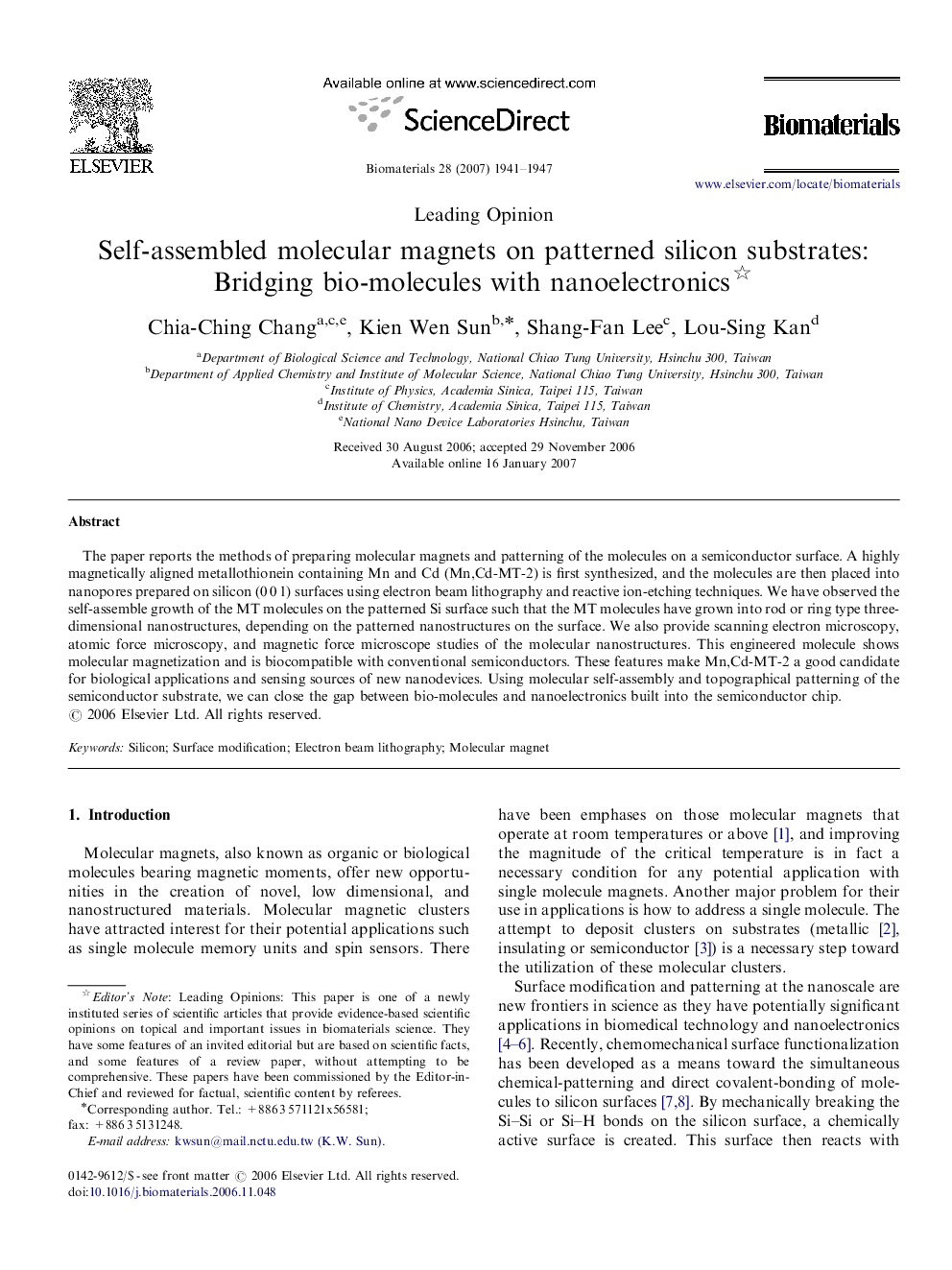| Article ID | Journal | Published Year | Pages | File Type |
|---|---|---|---|---|
| 11005 | Biomaterials | 2007 | 7 Pages |
The paper reports the methods of preparing molecular magnets and patterning of the molecules on a semiconductor surface. A highly magnetically aligned metallothionein containing Mn and Cd (Mn,Cd-MT-2) is first synthesized, and the molecules are then placed into nanopores prepared on silicon (0 0 1) surfaces using electron beam lithography and reactive ion-etching techniques. We have observed the self-assemble growth of the MT molecules on the patterned Si surface such that the MT molecules have grown into rod or ring type three-dimensional nanostructures, depending on the patterned nanostructures on the surface. We also provide scanning electron microscopy, atomic force microscopy, and magnetic force microscope studies of the molecular nanostructures. This engineered molecule shows molecular magnetization and is biocompatible with conventional semiconductors. These features make Mn,Cd-MT-2 a good candidate for biological applications and sensing sources of new nanodevices. Using molecular self-assembly and topographical patterning of the semiconductor substrate, we can close the gap between bio-molecules and nanoelectronics built into the semiconductor chip.
